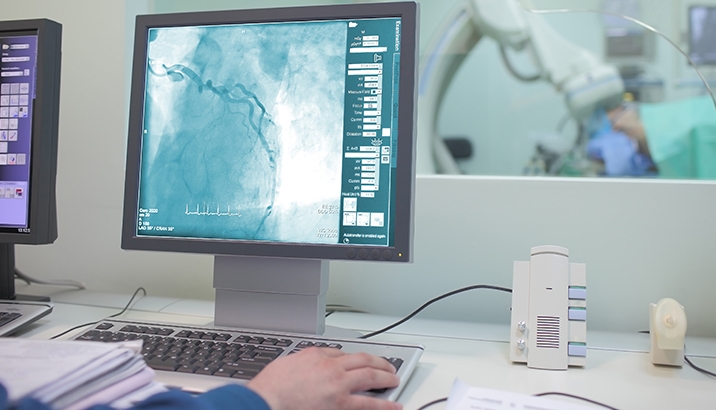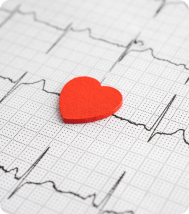Coronary angiography provides detailed information about the structure and function of the heart and coronary arteries, which supply oxygen-rich blood to the heart muscle. By visualising these arteries, doctors can identify potential blockages, narrowings, or other abnormalities that may contribute to heart disease.
Coronary Angiography

What Is a Coronary Angiogram?
A coronary angiogram is a specialised imaging test that involves the injection of a radio-opaque dye (contrast medium) through a thin tube (catheter) into the blood vessels, then taking X-ray images of the heart. This procedure helps detect any narrowing, blockages, or other abnormalities in the coronary arteries.
The coronary arteries supply blood and oxygen to the heart muscle, which can become clogged due to the buildup of cholesterol deposits or other substances (plaques). Blocked or narrowed arteries can be a very serious condition, as they hinder blood and oxygen from reaching the heart, causing discomfort or pain (angina) or even a heart attack.
Why Coronary Angiogram Is Performed
A cardiologist may recommend a coronary angiogram for the following reasons:
- There are symptoms associated with coronary artery disease such as chest pain (angina), shortness of breath, palpitations
- To check for the progression of existing coronary artery disease
- An abnormal or irregular result from a stress test or electrocardiogram (ECG)
- The patient has been diagnosed with a heart attack, heart valve disorder, or heart failure
- In preparation for cardiovascular procedures, such as coronary angioplasty, bypass surgery, or heart valve surgery
- To identify and assess complex congenital heart defects
What to Expect During Coronary Angiography
The patient will remain awake throughout the procedure, but a sedative will be given beforehand to ensure comfort. The access site, either in the groin (femoral) or wrist (radial), will be cleaned with an antiseptic solution.
A small incision will be made at the access site, and a short plastic sheath will be inserted into the artery. A catheter will then be passed through the sheath and into the artery to reach the heart. Patients may experience mild discomfort or pressure during catheterisation.
Once the catheter is placed, a radio-opaque dye is injected to look for blockages or constricted areas in the coronary arteries using X-ray guidance. The doctor will rotate the X-ray camera around the area to capture images of the heart from various angles.
At the end of the procedure, the doctor will remove the catheter while leaving the sheath in place. A constant pressure or specialised closure device will be applied to the access site for 15–30 minutes to prevent bleeding.
Coronary angiography usually takes 30 minutes to complete. In some cases, the procedure may take longer (one to two hours), depending on its complexity and if additional procedures are necessary, such as angioplasty or stenting.
What to Expect After Coronary Angiography
After the procedure, the patient will be transferred to a recovery room, where a medical team will closely monitor their blood pressure, pulse, heart rate, and puncture site for any signs of bleeding or complications.
The patient may experience temporary soreness or tenderness in the area of the catheterisation injection, as well as a slight bump or bruise on the skin.
Generally, patients can be discharged the same day or the following day if there are no complications and may be asked to attend follow-up appointments.
Understanding the Results of a Coronary Angiography
Once the results are ready, the doctor will go through the results with the patient and determine the next course of action. Broadly speaking, the results will either be normal or abnormal:
- Normal Results – This shows there are no blockages or narrowing in the coronary arteries, which means the heart has adequate blood flow and function.
- Abnormal Results – This indicates a blockage in one or more coronary arteries and the presence of a heart condition, such as coronary artery disease. The doctor may perform an angioplasty and/or stenting to improve blood flow to the heart muscle.
Risks Associated with Coronary Angiography
Although uncommon, there are some risks associated with coronary angiograms (as with all medical procedures). They include:
Bruising
– Mild bruising around the insertion site is common and typically resolves within a few weeks.Allergy to the Contrast Dye
– In rare cases, a patient may experience an allergic reaction to the contrast dye used during the procedure.Injury to the Artery
– In rare cases, the catheter insertion site in the wrist or groin can cause arterial damage and bleeding or blood clot formation.Heart Arrhythmia
– The catheter and contrast medium used in angiography may irritate the myocardial tissue and lead to disturbances in the heart’s electrical impulses.
Rest assured that your medical team will ensure that risks are kept to a minimum; and will be professionally managed if the need arises.
Our Insurance Partners
To keep our services accessible and convenient to our patients, we accept most major insurances and can assist with the claims process.
We encourage you to call our clinic so we can review your coverage and assist you accordingly.












